Dearest readers, have you ever been to the Laguna town named Magdalena1? If you had, did you visit its parish church? If not, allow Titas S tell you about it.
Here are 6 facts about St. Maria Magdalene Parish Church, along with a brief recount of my observations during my short visit:
1.It is a Roman Catholic church of the town of Magdalena1, in the province2 of Laguna3, in the Calabarzon4 Region5 of the Philippines. This church is under the Roman Catholic Diocese of San Pablo6.
 Facade, St. Maria Magdalene Parish Church, Magdalena, Laguna – Photo source: https://en.wikipedia.org/wiki/Santa_Maria_Magdalena_Parish_Church#/media/File:Magdalena,_Laguna.JPG
Facade, St. Maria Magdalene Parish Church, Magdalena, Laguna – Photo source: https://en.wikipedia.org/wiki/Santa_Maria_Magdalena_Parish_Church#/media/File:Magdalena,_Laguna.JPG
2. Magdalena1 was formerly known as Ambling, a barrio of Majayjay (a nearby town), until it was elevated as a town in 1821. The first church, made of cogon and wood was constructed in 1820, and was dedicated to Saint Mary Magdalene7. Father Antonio Moreno, OFM, was appointed as its first parish priest in 1821.
The first time I visited this church was on March 8, 2020, as an early Laguna Visita Iglesia8 with my college buddies. Read more about our religious bonding in my post next week. I also described Visita Iglesia in the post: Foreign Seniors Ask: WHAT IS VISITA IGLESIA?
The date, March 8, 2020, was coincidentally International Women’s Day, and what better day to visit this church! The image of St. Mary Magdalene7 is honored at the center of the altar, revered as the patron saint of the town of Magdalena.
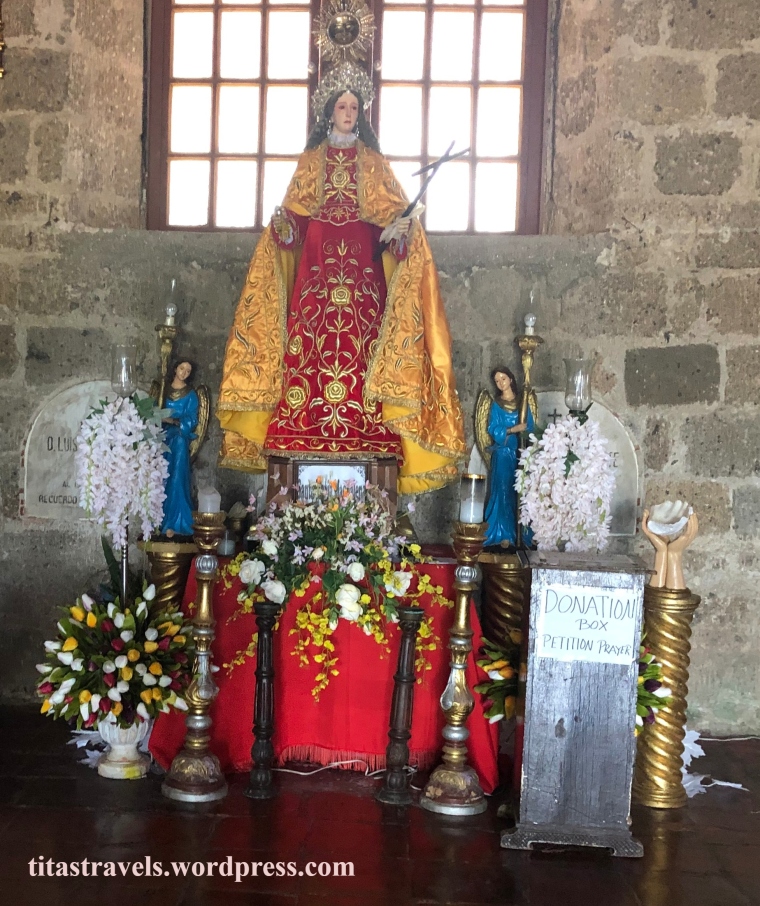 On the right side, towards the middle of the church, is a tall statue of St. Mary Magdalene7. She has a red robe with an intricate golden floral design. Her gold cape has the same floral design. She holds a cross and a handkerchief on her right hand. She has long, blonde, wavy hair adorned a golden bejeweled crown. She is fair-skinned and has a sad facial expression, perhaps suggesting her grief as she witnessed the crucifixion, burial, and resurrection of Jesus Christ.
On the right side, towards the middle of the church, is a tall statue of St. Mary Magdalene7. She has a red robe with an intricate golden floral design. Her gold cape has the same floral design. She holds a cross and a handkerchief on her right hand. She has long, blonde, wavy hair adorned a golden bejeweled crown. She is fair-skinned and has a sad facial expression, perhaps suggesting her grief as she witnessed the crucifixion, burial, and resurrection of Jesus Christ.
3. A permission to build a stone church was ordered by Captain Pablo de la Concepcion in 1829. The townspeople were forced to pay taxes and quarry sand and stones from the river. The construction of the church building was halted in 1839, continued in 1849, and finished in 1855 under the direction of Father Maximo Rico, Father Jose Cuesta, Father Joaquin de Coria and Father Francisco de Paula Gonzalez.
 Interior, St. Maria Magdalene Parish Church, Magdalena, Laguna (looking towards the entrance)
Interior, St. Maria Magdalene Parish Church, Magdalena, Laguna (looking towards the entrance)
 A side chapel, St. Maria Magdalene Parish Church, Magdalena, Laguna
A side chapel, St. Maria Magdalene Parish Church, Magdalena, Laguna
4. This Baroque9 church is mainly made of sandstone and is elevated by a flight of steps facing the plaza (town square).
I like the elevation of this parish church which accounts for its cool atmosphere and view of Magdalena’s town plaza. St. Maria Magdalene Parish Church, Magdalena, Laguna, day and night, Christmas 2019, by Venus Buenaceda-Calo
St. Maria Magdalene Parish Church, Magdalena, Laguna, day and night, Christmas 2019, by Venus Buenaceda-Calo
Personally, the church is not as grand as the other Laguna3 churches we visited, but its charm comes from:
- its gold colored retablo10, highlighting St. Mary Magdalene7, with smaller statues of the Sacred Heart of Jesus11 to the left and the Immaculate Conception12 to the right, at a lower level;
 The main retablo of St. Maria Magdalene Parish Church, Magdalena, Laguna, highlighting St. Mary Magdalene at the center
The main retablo of St. Maria Magdalene Parish Church, Magdalena, Laguna, highlighting St. Mary Magdalene at the center
- the sandstones used to build this church, making it look massive and sturdy; and,
- its elevated location which makes it an airy church to attend mass as well as a good place to meditate and be more intent on one’s communication with God.
The Baroque9 style is obviously manifested by the dome over the altar, with golden rays towards the center to focus one’s attention on the altar and retablo10. St. Joseph, the Father of Jesus, is honored on the left side altar. The right side altar had no statue during our visit, leaving a rectangular background with a vertically yellow colored center, and blue on both sides, with the painting of clouds and angels, all facing the center of this side altar. Only a bare cross with a dark cloth was placed in front of the right side altar. There was a female statue in front of the said cross, but I forgot to ask who that holy figure was. It looked like the Immaculate Heart of Mary13 because of the exposed heart of the crowned female statue.

The ceiling has a repetitive off-white square design, with dark grouts, highlighted by simple chandeliers, each with a central white bulb surrounded by eight white upside down-floral-shaped lights.
 Such a beautiful statue of an angel holding the stout of holy water near the side entrance, St. Maria Magdalene Parish Church, Magdalena, Laguna
Such a beautiful statue of an angel holding the stout of holy water near the side entrance, St. Maria Magdalene Parish Church, Magdalena, Laguna
5. To the left of the exterior is a four-storey octagonal belltower with a square base. Its construction was finished in 1861.
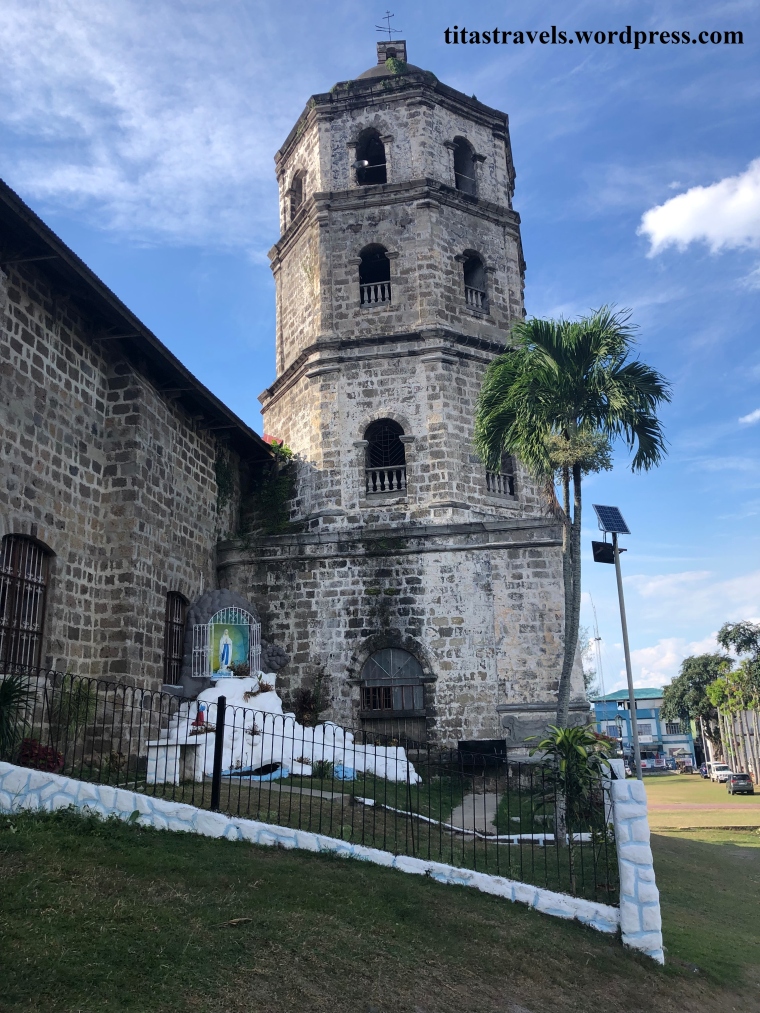
6. In its convent, Filipino revolutionary leader General Emilio Jacinto14 sought refuge and his blood stains were preserved where he was wounded.
Apologies for not being able to go to the convent and the site where General Jacinto14 was wounded so I cannot say more about it. We still had two more churches to visit to fulfill our Visita Iglesia8 because we had a late lunch in Pagsanjan15, and given the distance among the chosen churches to be visited amidst road construction and traffic, as well as the fact that my buddies all came from Metro Manila (braving the roadworks via the South Luzon Expressway).
However, I was told by the hospitable local ladies in the church that General Jacinto14 took refuge in the convent during the height of the Philippine Revolution in 1898, after he was wounded by Spanish soldiers. Unfortunately, he died there too. The townspeople made a marker where he died, and preserved the blood stains therein, to honor this brave Filipino hero. Perhaps, the next time I visit this church, I will go to that spot.
The information was obtained from the Wikipedia page “Santa Maria Magdalena Parish Church”.16
So, have I convinced you to visit this church? Why not include it in your next Laguna3 Visita Iglesia8?
This is not a sponsored post. I just want my readers to know more about the Philippines.
You know what, dearest readers? Tita S was blessed to have done an early 2020 Visita Iglesia27 with her college buddies on March 8, before the Presidential proclamation of a of a public health emergency for the entire country due to COVID-19. See her posts so you can, somehow, virtually join her, and imagine that you also did the Visita Iglesia because it might be impossible to visit seven churches during this pandemic for Holy Week 2020: LAGUNA VISITA IGLESIA 2020: PART 1 (OF 2) and LAGUNA VISITA IGLESIA 2020: PART 2 (OF 2)
Did you find this post informative? I would like to hear from you about your visit to St. Mary Magdalene Parish Church.
See other interesting places through other posts in this category and other categories of SCapades, Pinoy Delights, and Smart Traveler – Now You Know, Short and Simple, and Say, Say, Say. Happy reading, and I hope that you will appreciate what I shared and some of the featured destinations will be part of your future travel plans!
Remember to share this post with your friends, follow me by clicking on the bottom right corner of your device, and do not forget to like this post. Thank you.
– – – – – – – – – – – – – – – – – – – – – – – – – –
The following terms are defined for interested readers, especially those with “Senior-Moments”, not familiar with Filipino, Catholic and architectural terms, and those too busy or lazy to Google such terms:
1Magdalena is a fourth class municipality17 located in the western part of the province2 of Laguna3, in the Calabarzon4 Region5 of the Philippines. It is bounded on the north by the towns of Pagsanjan and Sta. Cruz, on the west by Nagcarlan and portion of Sta. Cruz, on the east by Majayjay and portion of Pagsanjan, and on the south by Liliw. It was founded on January 18, 1820. This town was originally named “Magdalena de Ambling”, derived from its patron saint, Maria Magdalena, and Ambling, its name when it was still a barrio18 of nearby town Majayjay. Renamed simply Magdalena, it now has 24 barangays19. The information was obtained from Wikipedia page “Magdalena, Laguna”20 and http://calabarzon.dilg.gov.ph/132-old-lgus/old-laguna-lgus/584-magdalena.
2A province is the primary administrative and political division in the Philippines. It is the second-level administrative sub-division of a region5. There are 81 provinces (called “lalawigan”) in the Philippines. Each province is governed by an elected legislature called the Sangguniang Panlalawigan, and by an elected governor. Remember, a province in the Philippines is divided into cities and municipalities17 (or towns), which in turn, are divided into barangays19, formerly called barrios18. The information was obtained from Wikipedia page “Provinces of the Philippines.”21 See a related post: Foreign Seniors Ask: WHAT ARE PROVINCES IN THE PHILIPPINES?
3Laguna is a province2 in the Calabarzon4 Region5 of the Philippines, located southeast of Metro Manila, north of Batangas, west of Quezon, south of the province of Rizal, and east of Cavite. This is the 7th richest province in the country, the third largest province in the region5, and hugs the southern shores of Laguna de Bay, the largest lake in the country. It is composed of 24 municipalities17 and 6 cities. The provincial capital is the town of Santa Cruz since 1858, after Bay (1581-1688) and Pagsanjan15 (1688-1858). It is historically one of the first provinces in the Philippines to have been visited by Christian missionaries. Its main natural resources are its agriculture and fisheries, owing to its position near Laguna de Bay and the surrounding lowlands. The information was obtained from the Wikipedia page “Laguna (province)”22
4Calabarzon, or Region IV-A, or Southern Tagalog Mainland, is a Philippine region5 located in the island group of Luzon, with Calamba as its regional center. CALABARZON is an acronym for this region’s five provinces2: CAvite, LAguna3, BAtangas, Rizal, QueZON. It is the most populated region in the country and the country’s second most densely populated region, after Metro Manila. This region is located south of the National Capital Region (NCR), bordered by the provinces of Aurora, Bulacan, and Metro Manila in the north, Manila Bay in the west, Tayabas Bay, and Sibuyan Sea in the south, and Lamon Bay and the Bicol Region in the east. The information was obtained from the Wikipedia page “Calabarzon”23 and https://lga.gov.ph/region/region-iv-a.
5A region is an administrative division based on geographical, cultural and ethnological characteristics. Each region is further subdivided in provinces2, composed of cities and municipalities17 (or towns), which in turn, are divided into barangays19, formerly called barrios18, according to Wikipedia page “Regions of the Philippines”.24 See a related post: Foreign Seniors Ask: WHAT ARE THE REGIONS OF THE PHILIPPINES?
6The Diocese of San Pablo is a Roman Catholic diocese which is a suffragan of the Archdiocese of Manila. This diocese covers the entire province2 of Laguna3. Its patron saint, or titular head, is Saint Paul the Hermit25. It is located along Marcos Paulino Avenue in San Pablo City26, Laguna, with contact number (049) 562-1039. The information was obtained from the Wikipedia page “Roman Catholic Diocese of San Pablo”.27
7Mary Magdalene, Magdalene, or the Madeleine, was a Jewish woman who, according to the four canonical gospels, traveled with Jesus as one of His followers, and was a witness to His crucifixion, burial, and resurrection. She is considered a saint by the Catholic, Eastern Orthodox, Anglican, and Lutheran churches, with a feast day of July 22. The information was obtained from the Wikipedia page “Mary Magdalene”.28
8Visita Iglesia, or Seven Churches Visitation, is the Roman Catholic Lenten practice to visit seven (and even 14) churches during Holy Week, traditionally on the evening of Maundy Thursday, to pray before the Blessed Sacrament in each church. There are no set prayers given by the Catholic Church for this activity, except to pray for the intentions of the Pope and recite the Lord’s Prayer, Hail Mary and Glory Be. Some may opt to pray the Stations of the Cross29. The information was obtained from the Wikipedia page “Seven Churches Visitation”.30 See a related post: Foreign Seniors Ask: WHAT IS VISITA IGLESIA?
9Baroque architecture is characterized by: domes, often painted with a sky filled with angels and sculpted sunbeams, suggesting a vision of heaven; a quadratura31; grand stairways, winding upwards in stages, giving changing views from different levels; cartouche32 in elaborate forms and sculpted frames which break up the surfaces and add three-dimensional effects to the walls; mirrors to give the impression of depth and greater space, particularly when combined with windows; incomplete architectural elements like frontons with sections missing, causing sections to merge and disorient the eye; chiaroscuro, the use of strong contrasts of darkness and light for dramatic effect; overhead sculpture, on or just below the ceiling, made of wood (often gilded), plaster or stucco33, marble or faux finishing, giving the impression of floating in the air; Solomonic columns34 which give an illusion of motion; and, elliptical or oval spaces to eliminate right angles. The information was obtained from the Wikipedia page “Baroque architecture”.35
10A retablo is a large altarpiece painting or an elaborate wooden structure with sculpture, or a combination of the two, above an altar, and an elaborate framework enclosing it, according to the Wikipedia page “Retablo”.36
11The Sacred Heart of Jesus is the image of Jesus Christ, depicted with a flaming heart within His bosom, shining with divine light, pierced by the lance-wound, encircled by a crown of thorns, surmounted by a cross, and bleeding, and a wounded hand pointing at the heart. The heart of Jesus is viewed as a symbol of God’s boundless and passionate love for mankind. The information was obtained from the Wikipedia page “Sacred Heart”.37
12Immaculate Conception, in Roman Catholic Christian theology, is the conception of the Virgin Mary free from original sin, by virtue of the merits of her Son, Jesus. The Catholic Church teaches that God acted upon Mary in the first moment of her conception, keeping her “immaculate”. The information was obtained from the Wikipedia page “Immaculate Conception”.38
13The Immaculate Heart of Mary is a devotional name used to refer to the interior life of the Blessed Virgin Mary, her joys and sorrows, her virtues and hidden perfections, and, above all, her virginal love for God the Father, her maternal love for her Son Jesus, and her compassionate love for all people. Traditionally, her heart is depicted with seven wounds or swords, in homage to the seven sorrows of Mary. Roses or another type of flower may be wrapped around her heart. The information was obtained from Wikipedia page “Immaculate Heart of Mary.”39
Now, for those who are not familiar, you might ask, what are the Seven Sorrows (or Dolors)? Look and think no more. These are events in the life of the Blessed Virgin Mary that are popular devotions and are frequently depicted in art: the prophecy of Simeon40 (Luke 2:34-35), the flight into Egypt (Matthew 2:13-23), the loss of the Child Jesus in the temple of Jerusalem (Luke 2:43-45), Mary’s meeting Jesus on the Via Dolorosa41 (not in the New Testament), the Crucifixion of Jesus on Mount Calvary (Matthew 27:34-50, Mark 15:23-37, Luke 23:33-46, John 19:18-30), the piercing of the side of Jesus with a spear, and His descent from the Cross (John 18:34), and the burial of Jesus by Joseph of Arimathea42 (Matthew 27:57-61, Mark 15:43-47, Luke 23:50-53. John 19:40-42). These Seven Sorrows should not be confused with the five Sorrowful Mysteries of the Rosary. The information was obtained from the Wikipedia page “Our Lady of Sorrows”.43 Read a related post about Our Lady of Sorrows of Turumba: NOW YOU KNOW: NUESTRA SEÑORA DE LOS DOLORES DE TURUMBA
14Emilio Jacinto (1875 – 1899) was a Filipino General during the Philippine Revolution (1896 – 1898). He was one of the highest-ranking officers in the Philippine Revolution and was one of the highest-ranking officers of the revolutionary society Kataas-taasan, Kagalang-galangang Katipunan ng mga Anak ng Bayan (or simply Katipunan), being a member of its Supreme Council. He is known as the “Brains of the Katipunan” since he was a great military strategist. The information was obtained from Wikipedia page “Emilio Jacinto.”44
15Pagsanjan is a third class municipality17 in the province2 of Laguna3, in the Calabarzon4 Region5 of the Philippines. It is bounded on the north by the town of Lumban, on the west by Magdalena and Santa Cruz, on the east by the Pagsanjan Gorge, and on the south by Cavinti. The town is the tourist capital of Laguna and the Home of the Bangkero Festival (Boatmen Festival, held every March). It has 16 barangays19. The town is known for boatmen who skillfully steer the dugout canoes along the river to reach the Pagsanjan Falls (actually Magdapio Falls, since it is located in the nearby town of Cavinti). The information was obtained from Wikipedia page “Pagsanjan”45 and http://calabarzon.dilg.gov.ph/132-old-lgus/old-laguna-lgus/580-pagsanjan. See a related post about this town’s arch: Pagsanjan’s Pride: PUERTO REAL – THE TOWN’S GATE
16“Santa Maria Magdalena Parish Church,” accessed January 3, 2020, https://en.wikipedia.org/wiki/Santa_Maria_Magdalena_Parish_Church
17A municipality is a small, single urban administrative division, or local government unit (LGU), in the Philippines which has corporate status and powers of self-government or jurisdiction as granted by law. It is a unit under a province2, subdivided into barangays19, and is locally called “bayan”. In the Philippines, a municipality is headed by a mayor, a vice mayor and members of the Sangguniang Bayan (legislative branch). It can enact local policies and laws, enforce them, and govern its jurisdictions. It can enter into contracts and other transactions through its elected and appointed officials and can tax as well. It enforces all local and national laws. There are almost 1,500 municipalities in the Philippines. The information was obtained from Wikipedia page “Municipalities of the Philippines.”46 See a related post: Foreign Seniors Ask: HOW MANY CITIES ARE THERE IN THE PHILIPPINES?
18The term barrio, in the Philippines, once referred to a rural village, but it was changed by law in 1975 to the term barangay19, the basic unit of government with an average population of 2,500 people. The information was obtained from Wikipedia page “Barrio.”47
19A barangay in the Philippines is the smallest administrative division in the Philippines, headed by a barangay captain, aided by a Sangguniang Barangay (Barangay Council). It is the native Filipino term for a village. It was formerly called a barrio18. In a metropolitan area, a barangay is an inner city neighborhood, a suburb, or a suburban neighborhood. The word barangay originated from the term “balangay”, a kind of boat used by a group of Austronesian people who migrated to the Philippines. A number of barangays grouped together is called a district. The information was obtained from Wikipedia page “Barangay.”48
20“Magdalena, Laguna,” accessed January 3, 2020, https://en.wikipedia.org/wiki/Magdalena,_Laguna
21“Provinces of the Philippines,” accessed July 17, 2018, https://en.wikipedia.org/wiki/Provinces_of_the_Philippines
22“Laguna (province),” accessed January 3, 2020, https://en.wikipedia.org/wiki/Laguna_(province)
23“Calabarzon,” accessed January 3, 2020, https://en.wikipedia.org/wiki/Calabarzon
24“Regions of the Philippines,” accessed July 17, 2018, https://en.wikipedia.org/wiki/Regions_of_the_Philippines
25Saint Paul the Hermit, Paul of Thebes, Paul the Anchorite, Anba Bola, or Paul, the First Hermit (c. 227 – c. 342 AD), is regarded as the first Christian hermit, who was claimed to have lived alone in the desert from the age of 16 to 113 years of age. He is usually represented with a palm tree, two lions and a raven. He is venerated as a saint by the Catholic Church as well as the Orthodox Church. The information was obtained from the Wikipedia page “Paul of Thebes”.49
26San Pablo is a first class city in the southern portion of the province2 of Laguna3, in the Calabarzon4 Region5 of the Philippines, with 80 barangays19. It is one of the oldest cities in the country, founded in 1586, chartered in 1647, and became a city on May 7, 1940. It is the largest city in the province of Laguna by land area, and is nestled in the foothills of three mountains: Mount Banahaw, Mount Makiling, and the Sierra Madre Mountains. It is called the City of Seven Lakes because of the seven crater lakes scattered around the city: Lake Bunot, Lake Calibato, Lake Muhikap, Lake Palakpakin, Lake Pandin, Lake Sampaloc, and Lake Yambo. It is also a bustling city of trade and commerce as well as a center of education and learning with schools, colleges and training institutions. The information was obtained from the Wikipedia page “San Pablo, Laguna”.50
27“Roman Catholic Diocese of San Pablo,” accessed January 3, 2020, https://en.wikipedia.org/wiki/Roman_Catholic_Diocese_of_San_Pablo
28“Mary Magdalene,” accessed January 3, 2020, https://en.wikipedia.org/wiki/Mary_Magdalene
29The Stations of the Cross or the Way of the Cross, Ways of Sorrow, or Via Crucis, refers to the series of fourteen images depicting Jesus Christ on the day of His crucifixion and accompanying prayers, considered to be patterned after the Via Dolorosa41 in Jerusalem which is believed to be the actual path Jesus walked to Mount Calvary for His crucifixion. The devotion of Roman Catholics to do the Way of the Cross during Holy Week is like a spiritual pilgrimage through the contemplation of the Passion of Christ (the final period of the life of Jesus from His entrance in Jerusalem till His crucifixion). The 14 stations are: (1) Pilate condemns Jesus to die; (2) Jesus accepts His cross; (3) Jesus falls for the first time; (4) Jesus meets His mother, Mary; (5) Simon helps carry the cross; (6) Veronica wipes the face of Jesus; (7) Jesus falls for the second time; (8) Jesus meets the women of Jerusalem; (9) Jesus falls for the third time; (10) Jesus is stripped of His clothes; (11) Jesus is nailed to the cross; (12) Jesus dies on the cross; (13) Jesus is taken down from the cross; and, (14) Jesus is placed in the tomb. All these are according to the Wikipedia page “Stations of the Cross”.51 See a related post: Foreign Seniors Ask: WHAT IS VISITA IGLESIA?
30 “Seven Churches Visitation,” accessed March 21, 2018, https://en.wikipedia.org/wiki/Seven_Churches_Visitation
31A quadratura is a Baroque9 architectural feature which uses paintings in trompe-l’oeil52 of angels and saints in the dome and on the ceiling, combined with stucco33 frames or decoration. This style draws the eyes upward giving the illusion of three dimensions, and of looking through the ceiling to the heavens. The information was obtained from the Wikipedia page “Baroque architecture”.35
32A cartouche, or cartouch, is an oval or oblong design with a slightly convex surface, typically edges with ornamental scrollwork, used to hold a painted or low-relief design. The information was obtained from the Wikipedia page “Cartouche”.53
33Stucco refers to the cement-based plaster used for coating wall surfaces or molding into architectural decorations. It hardens into a highly durable material that requires little maintenance and can be used to obtain different textures and finishes.54
34A Solomonic column, also called Barley-sugar column, is a helical column, characterized by a spiraling twisting shaft like a corkscrew. It may be crowned with any design. The information was obtained from the Wikipedia page “Solomonic column”.55
35“Baroque architecture”, accessed January 3, 2020, https://en.wikipedia.org/wiki/Baroque_architecture
36“Retablo,” accessed January 3, 2020, https://en.wikipedia.org/wiki/Retablo
37“Sacred Heart,” accessed January 3, 2020, https://en.wikipedia.org/wiki/Sacred_Heart
38“Immaculate Conception,” accessed January 3, 2020, https://en.wikipedia.org/wiki/Immaculate_Conception
39“Immaculate Heart of Mary,” accessed January 3, 2020, https://en.wikipedia.org/wiki/Immaculate_Heart_of_Mary
40Simeon, according to Luke 2:25-35, was a just and devout man of Jerusalem who met Mary, Joseph, and Jesus as they entered the temple to fulfill the requirements of the Law of Moses on the 40th day from Jesus’ birth, at the presentation of Jesus at the Temple. The Holy Spirit visited Simeon and told him that he would not die until he had seen the Lord’s Christ. When he took Jesus into his arms, he uttered a prayer and gave a prophecy alluding to the crucifixion. This event is commemorated every February 2 as Candlemas, or more formally, the Presentation of the Lord, the Meeting of the Lord, or the Purification of the Virgin. His prophecy is used in the context of Our Lady of Sorrows56, and venerated as a saint with feast day On February 3. The information was obtained from Wikipedia page “Simeon (Gospel of Luke).”57
41Via Dolorosa, Sorrowful Way or Way of Suffering, is believed to be the actual path Jesus walked to Mount Calvary on His way to the crucifixion in the Old City of Jerusalem. The winding route from the former Antonia Fortress to the Church of the Holy Sepulchre, a distance of about 600 meters (2,000 feet), is a celebrated place of Christian pilgrimage. This current route was established in the 18th century and is marked by nine Stations of the Cross28, with the remaining five stations, located inside the Church of the Holy Sepulchre. The information was obtained from Wikipedia page “Via Dolorosa.”58
42Joseph of Arimathea, according to all four canonical gospels, was the man who assumed responsibility for the burial of Jesus after His crucifixion. According to John 19:38, upon hearing of Jesus’ death, this secret disciple of Jesus “asked Pilate (Roman governor who presided at the trial of Jesus and gave the order for His crucifixion) that he might take away the body of Jesus, and Pilate gave him permission.” He immediately purchased a line shroud (Mark 15:46) and proceeded to Golgotha to take the body of Jesus down from the cross. Joseph and Nicodemus took the body and bound it in linen cloths with the spices that the latter bought, according to John 19:39-40. He is the Patron of Funeral Directors and Undertakers and his feast day is March 17. The information was obtained from Wikipedia page “Joseph of Arimathea.”59
43“Our Lady of Sorrows,” accessed January 3, 2020, https://en.wikipedia.org/wiki/Our_Lady_of_Sorrows
44“Emilio Jacinto,” accessed January 3, 2020, https://en.wikipedia.org/wiki/Emilio_Jacinto
45“Pagsanjan,” accessed January 3, 2020, https://en.wikipedia.org/wiki/Pagsanjan
46“Municipalities of the Philippines,” accessed July 17, 2018, https://en.wikipedia.org/wiki/Municipalities_of_the_Philippines
47“Barrio,” accessed January 3, 2020, https://en.wikipedia.org/wiki/Barrio
48“Barangay,” accessed January 29, 2019, https://en.wikipedia.org/wiki/Barangay
49“Paul of Thebes,” accessed January 3, 2020, https://en.wikipedia.org/wiki/Paul_of_Thebes
50“San Pablo, Laguna,” accessed January 3, 2020, https://en.wikipedia.org/wiki/San_Pablo,_Laguna
51”Stations of the Cross,” accessed March 21, 2018, https://en.wikipedia.org/wiki/Stations_of_the_Cross
52Trompe-l’oeil is an art technique that uses realistic imagery to create the optical illusion that the depicted objects exist in three dimensions. The term is French for “deceive the eye”. The information was obtained from the Wikipedia page “Trompe-l’oeil”.60
53“Cartouche”, accessed January 3, 2020, https://en.wikipedia.org/wiki/Cartouche
54https://www.thebalancesmb.com/choose-right-stucco-mix-844655
55“Solomonic column”, accessed January 3, 2020, https://en.wikipedia.org/wiki/Solomonic_column
56Our Lady of Sorrows, Our Lady of Dolours, the Sorrowful Mother, Mother of Sorrows, Our Lady of Piety, Our Lady of the Seven Sorrows, or Our Lady of the Seven Dolours, refers to the Virgin Mary in relation to sorrows in her life, and portrays her in a sorrowful and tearful effect, with one or seven knives or daggers piercing her heart, often bleeding. Her feast is liturgically celebrated every September 15. The information was obtained from Wikipedia page “Our Lady of Sorrows.”43 See footnote 13 for the Seven Sorrows (or Dolors) of Our Lady.
57“Simeon (Gospel of Luke),” accessed January 3, 2020, https://en.wikipedia.org/wiki/Simeon_(Gospel_of_Luke)
58“Via Dolorosa,” accessed January 3, 2020, https://en.wikipedia.org/wiki/Via_Dolorosa
59“Joseph of Arimathea,” accessed January 3, 2020, https://en.wikipedia.org/wiki/Joseph_of_Arimathea
60“Trompe-l’oeil”, accessed January 3, 2020, https://en.wikipedia.org/wiki/Trompe-l’oeil





 Source:
Source:  Source:
Source:  Source:
Source:  Source:
Source:  Interior, Saint John the Baptist Parish Church, Liliw, Laguna – Source:
Interior, Saint John the Baptist Parish Church, Liliw, Laguna – Source:  Source:
Source: 
 Prayer to St. Bonaventure,
Prayer to St. Bonaventure,  Source:
Source: 
 Source:
Source: 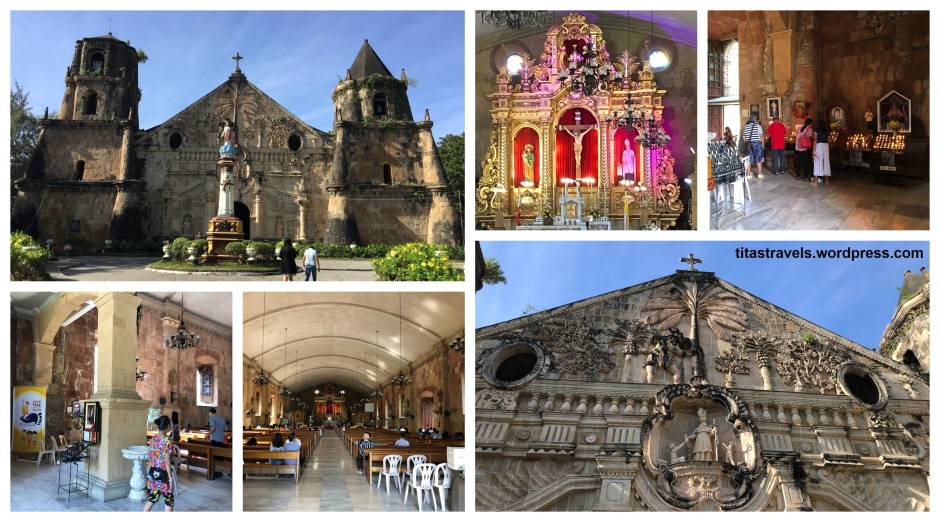
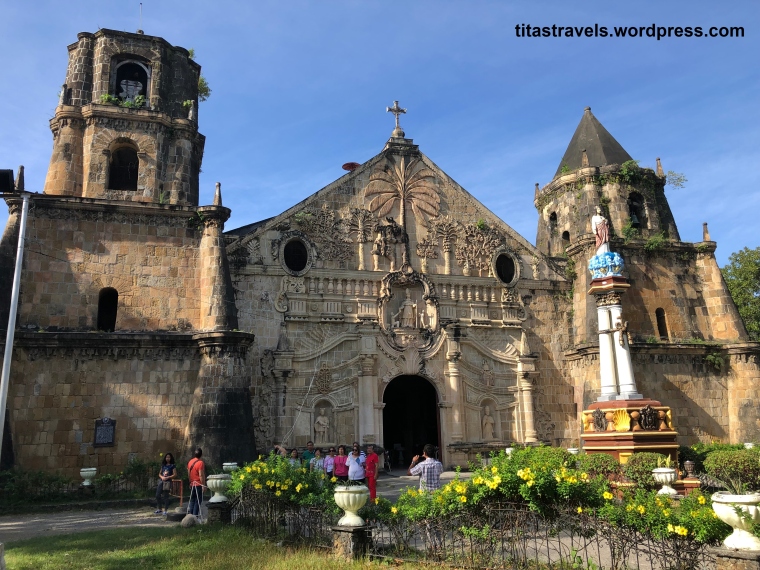


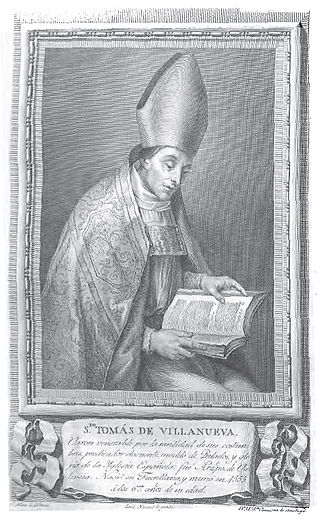


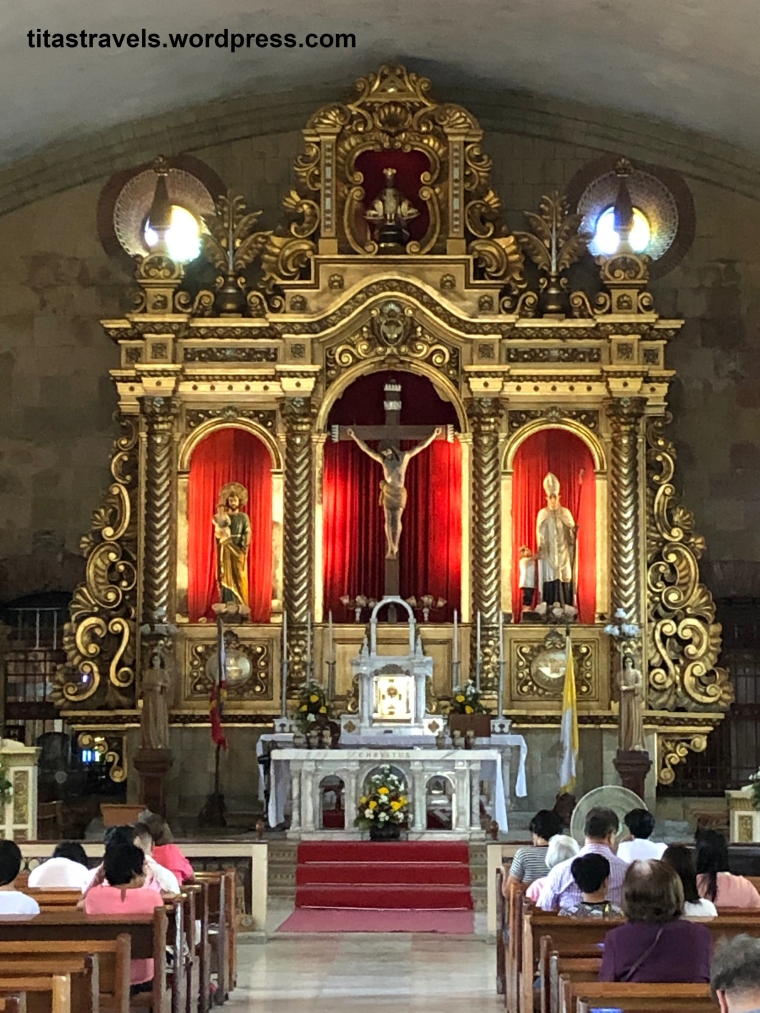
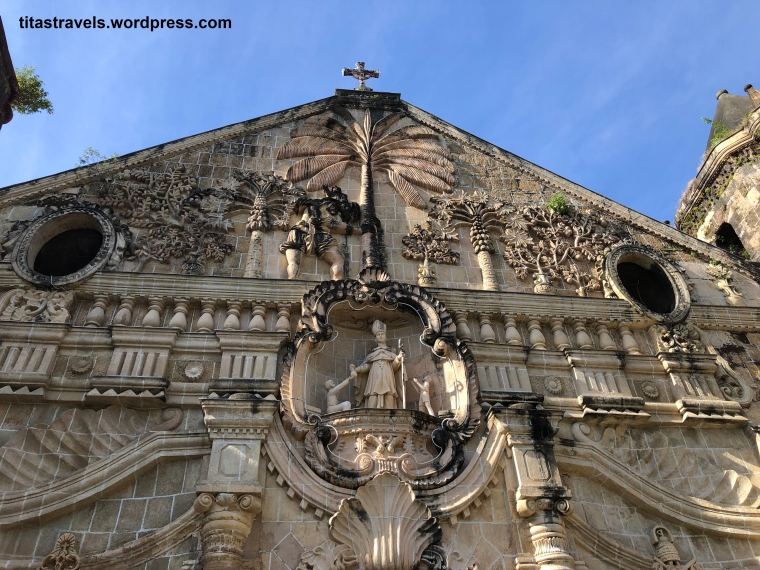
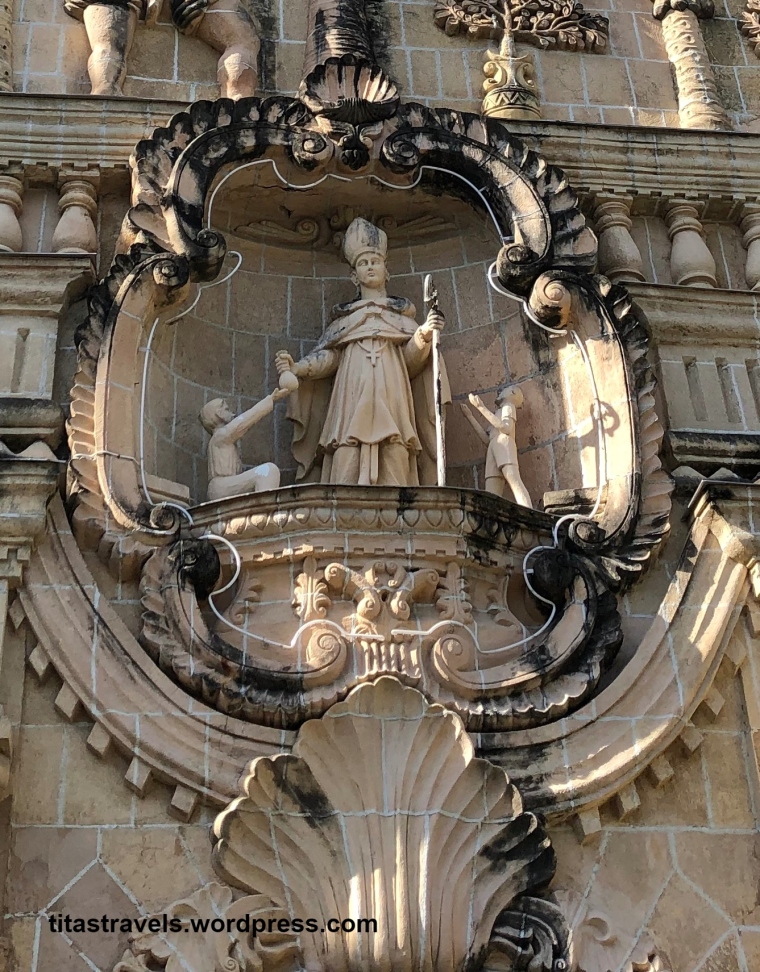
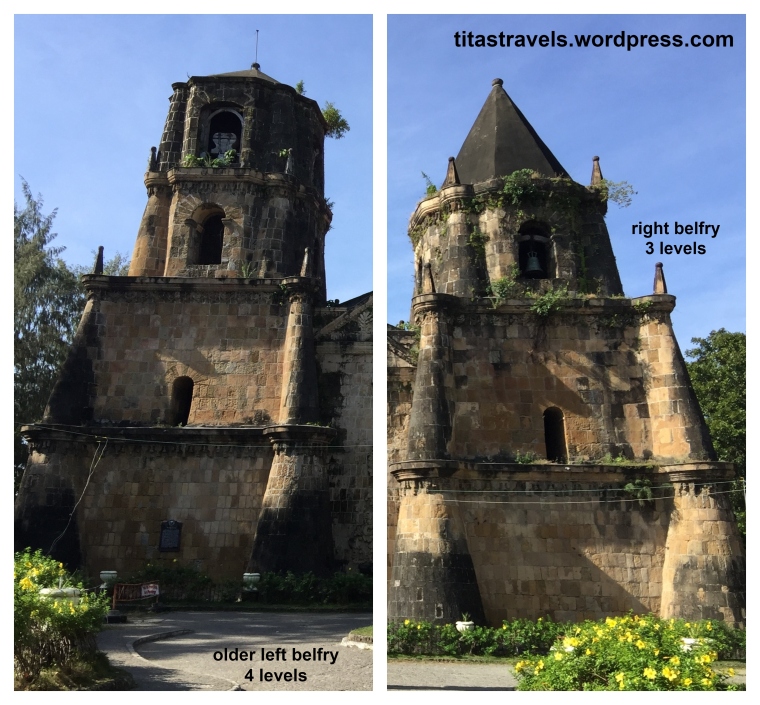



 Greg – originally posted to Flickr
Greg – originally posted to Flickr 
 Great news, target date of completion is May 21, 2019! Please give me feedback if this target was met.
Great news, target date of completion is May 21, 2019! Please give me feedback if this target was met. The Lazi Convent in 2012 (Carmelo Bayarcal, own work created June 10, 2012,
The Lazi Convent in 2012 (Carmelo Bayarcal, own work created June 10, 2012, 
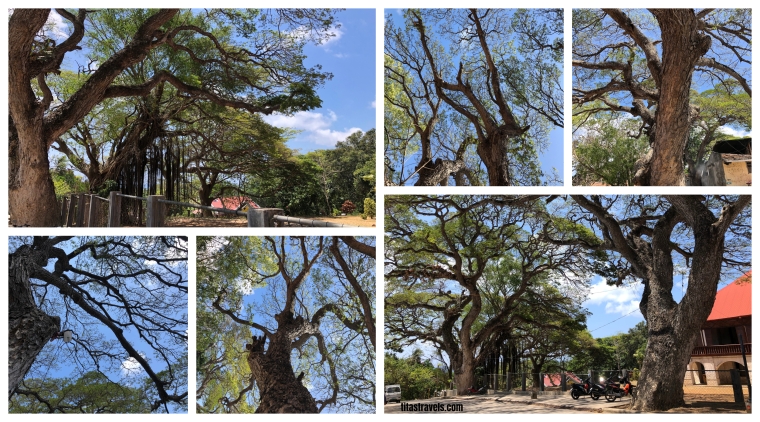
 Lazi Church in 2016 (Allan Jay Quesada, own work, 20 April 2016,
Lazi Church in 2016 (Allan Jay Quesada, own work, 20 April 2016,